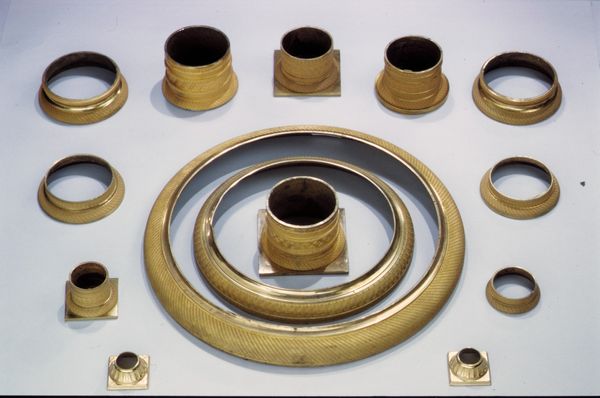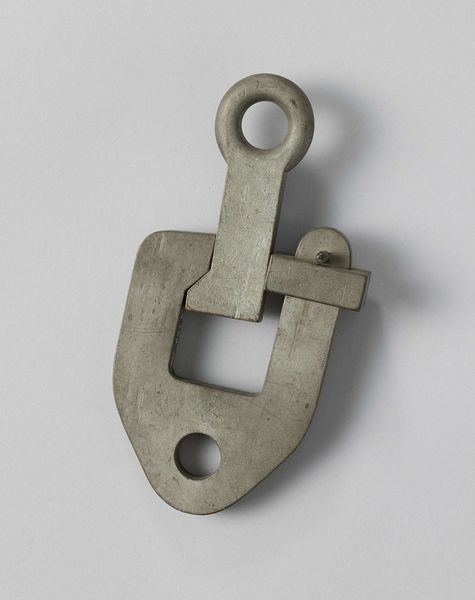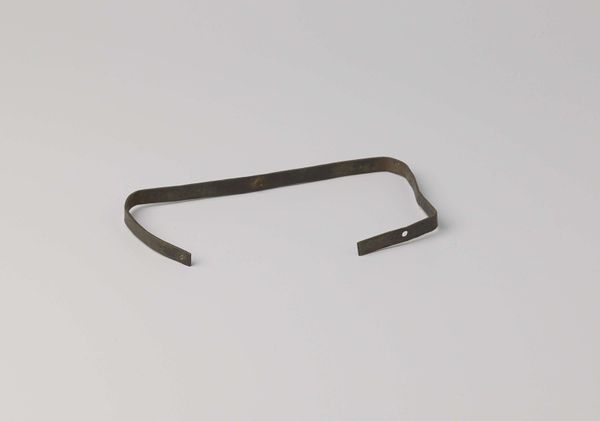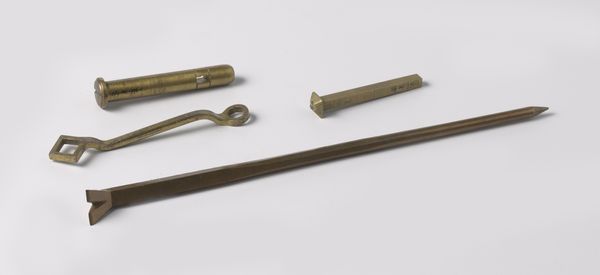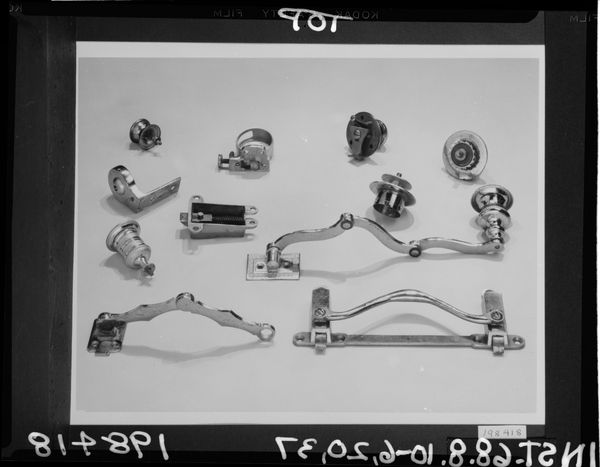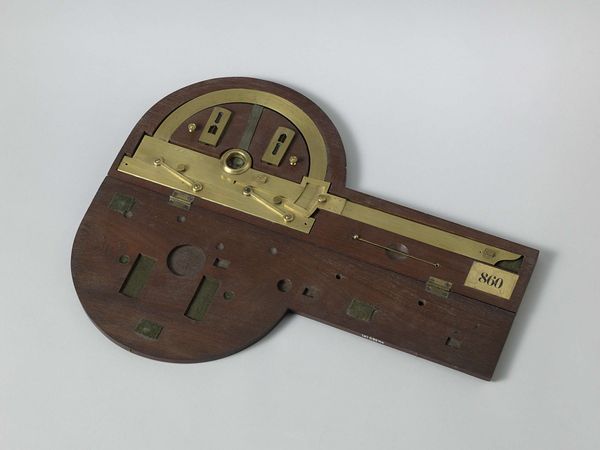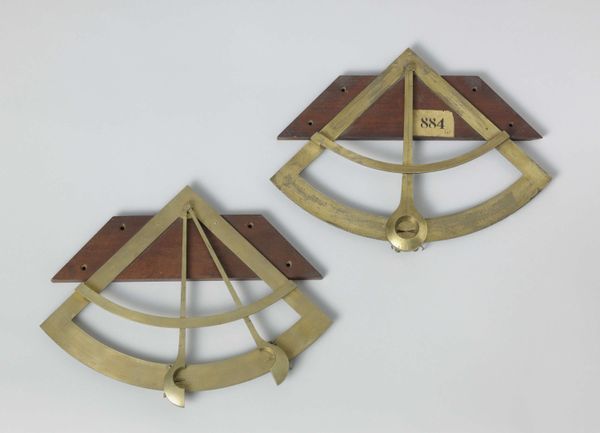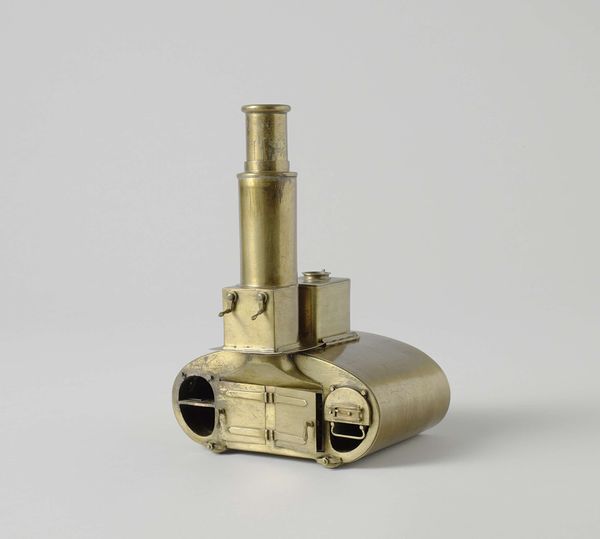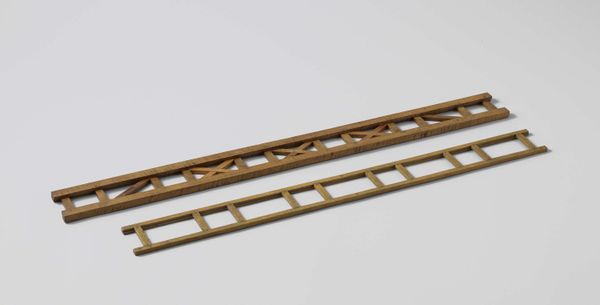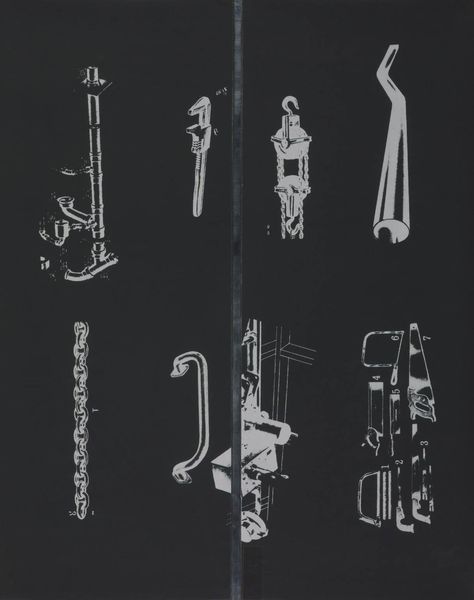
brass, metal, sculpture
#
brass
#
metal
#
sculpture
#
geometric
#
sculpture
#
decorative-art
#
realism
Dimensions: W. 8 3/4 in. (22.2 cm)
Copyright: Public Domain
Editor: Here we have "Furniture Hardware" made around 1820 to 1830. The artist is Henry Kellam Hancock. These functional brass and metal elements, now displayed as sculpture, really strike me with their geometric shapes and the warm tones of the brass. What can you tell me about this collection? Curator: I see this collection of hardware as a fascinating commentary on the social context of the early 19th century. The transition from handcrafted to mass-produced goods was well underway, and these brass fixtures occupy a unique place between the two worlds. What processes do you imagine in the creation of each of these pieces? Editor: I guess I envision a skilled artisan, carefully hammering and shaping each element, especially those intricate handles. But how does this collection blur the line between "high art" and "craft?" Curator: Precisely. The labor involved in their creation, the specific skill needed to work with brass, elevates them beyond mere utility. Furthermore, think about the consumption patterns of the time. Owning furniture adorned with such hardware signaled a certain status. Now isolated as art, it urges the question: How has the hardware outlived the furniture it belonged to, and what significance does that impart on our interpretation of its intrinsic value? Editor: That’s interesting. So, we're considering the social implications of production, the labor involved, and how these materials were viewed then, versus how we perceive them today. Curator: Yes. These humble objects offer insights into craftsmanship, consumption, and social status in early 19th-century America. By focusing on these aspects, we begin to dismantle the artificial hierarchy separating art from craft. What new questions does that bring for you? Editor: It makes me think about the value we assign to objects based on their perceived function. Looking closely at their form gives me a completely new perspective on them! Curator: Indeed, examining their materiality helps us understand a society in transition.
Comments
No comments
Be the first to comment and join the conversation on the ultimate creative platform.
